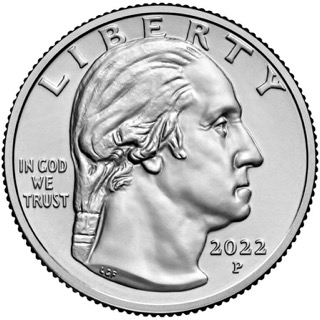
The quarter, short for quarter dollar, is a United States coin worth 25 cents, one-quarter of a dollar. The coin sports the profile of George Washington on its obverse, and after 1998 its reverse design has changed frequently. It has been produced on and off since 1796 and consistently since 1831.

The United States Mint is a bureau of the Department of the Treasury responsible for producing coinage for the United States to conduct its trade and commerce, as well as controlling the movement of bullion. It does not produce paper money; that responsibility belongs to the Bureau of Engraving and Printing. The first United States Mint was created in Philadelphia in 1792, and soon joined by other centers, whose coins were identified by their own mint marks. There are currently four active coin-producing mints: Philadelphia, Denver, San Francisco, and West Point.
The United States Mint has minted numerous commemorative coins to commemorate persons, places, events, and institutions since 1848. Many of these coins are not intended for general circulation, but are still legal tender. The mint also produces commemorative medals, which are similar to coins but do not have a face value, and therefore are not legal tender.
The dollar coin is a United States coin with a face value of one United States dollar. Dollar coins have been minted in the United States in gold, silver, and base metal versions. Dollar coins were first minted in the United States in 1794.

Presidential dollar coins are a series of United States dollar coins with engravings of relief portraits of U.S. presidents on the obverse and the Statue of Liberty on the reverse.
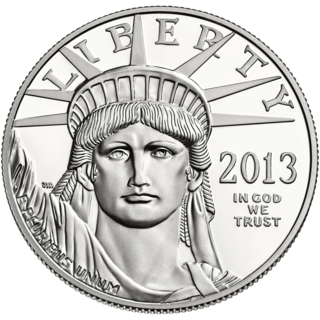
The American Platinum Eagle is the official platinum bullion coin of the United States. In 1995, Director of the United States Mint Philip N. Diehl, American Numismatic Association President David L. Ganz, and Platinum Guild International Executive Director Jacques Luben began the legislative process of creating the Platinum Eagle. After over two years of work, the 99.95% fine platinum coins were released by the United States Mint in 1⁄10, 1⁄4, 1⁄2 and 1 troy oz denominations. In late 2008, the fractional denominations were discontinued, leaving only the one ounce denomination. The Platinum Eagle is authorized by the United States Congress, and is backed by the United States Mint for weight, content, and purity.

In numismatics, a mule is a coin or medal minted with obverse and reverse designs not normally seen on the same piece. These can be intentional or produced by error. This type of error is highly sought after by collectors, and examples can fetch high prices.
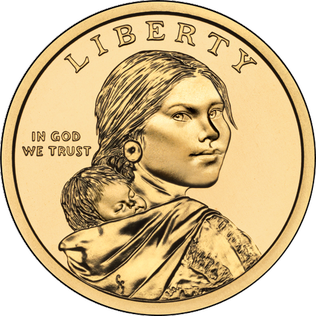
The Sacagawea dollar is a United States dollar coin introduced in 2000, but subsequently minted only for niche circulation from 2002 onward. The coin generally failed to meet consumer and business demands.

Thomas D. Rogers, Sr. is a former sculptor-engraver with the United States Mint and designer of several U.S. coins, including the 2000–2008 reverse side of the United States Golden dollar coins, or Sacagawea dollars. Rogers holds an A.A.S. degree with a major in commercial art. He joined the U.S. Mint in October 1991, working at the Philadelphia Mint facility, and retired in 2001. As of 2003 he was residing in Long Beach, Washington, and as of 2009 he was living and working in Oregon. His design for the Sacagawea dollar was modified slightly before it went into circulation.
The Artistic Infusion Program (AIP) is a program of the United States Mint, established in 2003, which invites American artists to create designs for U.S. coins and medals, most notably the 50 State, DC and US Territories, and America the Beautiful quarters. The goal of the AIP is to enrich and diversify the design of United States coins and medals by contracting a collection of artists with varying artistic skills and talents.
The America the Beautiful quarters were a series of fifty-six 25-cent pieces (quarters) issued by the United States Mint, which began in 2010 and lasted until 2021. The obverse (front) of all the coins depicts George Washington in a modified version of the portrait used for the original 1932 Washington quarter. There were five new reverse (back) designs each year, each commemorating a national natural or historic site such as national parks, national historic site, or national forests – one from each state, the federal district, and each territory. The program was authorized by the America's Beautiful National Parks Quarter Dollar Coin Act of 2008 (Pub. L.Tooltip Public Law 110–456 .

Joel Iskowitz is an American designer, book illustrator, print artist and stamp, coin and medal designer. From an initial interest in medical illustration, this graphic artist has branched to other fields. He specializes in highly realistic art resulting from extensive research to make his designs as accurate as possible. His philatelic (stamp) designs, he once said, "must be super accurate and well documented, for if you get so much as an animal's tuft of fur out of place on a philatelic design you will hear from someone critical of your design." Among his coin designs are the reverse of the 2009 Lincoln Bicentennial penny, 2008 Arizona State Quarter, 2009 District of Columbia Quarter, and the 2016 Nancy Reagan First Spouse Gold Coin. In 2011 he was inducted into the Hunter College Hall of Fame. A major address on his career as a designer of commemorative coins and medals, at the Museum of American Finance in October 2015, was aired on C-SPAN.
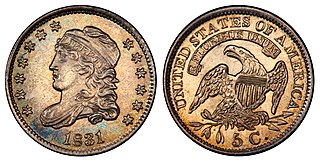
The Capped Bust coinage of the United States consisted of a half dime, dime, quarter and half dollar.
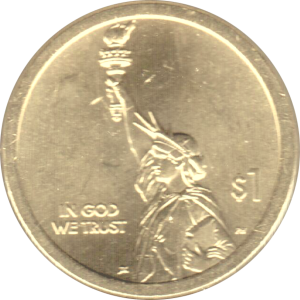
American Innovation dollars are dollar coins of a series minted by the United States Mint beginning in 2018 and scheduled to run through 2032. It is planned for each member of the series to showcase an innovation, innovator or group of innovators from a particular state or territory, while the obverse features the Statue of Liberty.
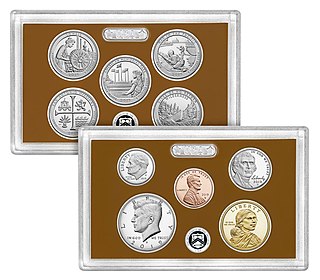
The United States Mint Proof Set, commonly known as the Proof Set in the United States, is a set of proof coins sold by the United States Mint. The proof set is popular with coin collectors as it is an affordable way to collect examples of United States coinage in proof condition.
The First in Flight Centennial commemorative coins are a series of commemorative coins issued by the United States Mint in 2003. The coins, issued in half dollar, dollar, and eagle ($10) denominations, commemorate the 100th anniversary of the first controlled flight of a powered heavier-than-air aircraft. The coins were authorized by Public Law 105-124.
The American Liberty high relief gold coin is a one-ounce gold bullion coin issued by the United States Mint since 2015. This coin was the first 100 dollar gold coin to be issued by the US Mint.

The American Women quarters program is a series of quarters featuring notable women in U.S. history, commemorating the centennial of the Nineteenth Amendment to the United States Constitution. The United States Mint is issuing five designs each year from 2022 to 2025 for 20 total designs. One woman will be honored on the reverse of each coin, selected for "contributions to the United States in a wide spectrum of accomplishments and fields, including but not limited to suffrage, civil rights, abolition, government, humanities, science, space, and arts." The obverse depicts George Washington with a new design.

The Vietnam Veterans Memorial silver dollar is a commemorative coin issued by the United States Mint in 1994. It was one of three coins in the 1994 Veterans Program, along with the Prisoners of War and Women in Military Service for America Memorial silver dollars.











